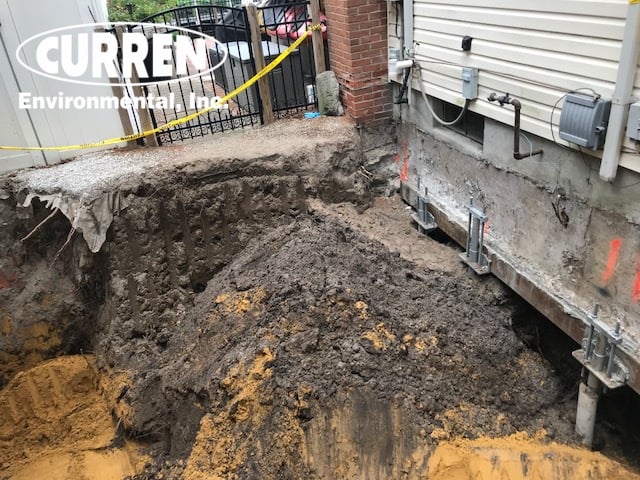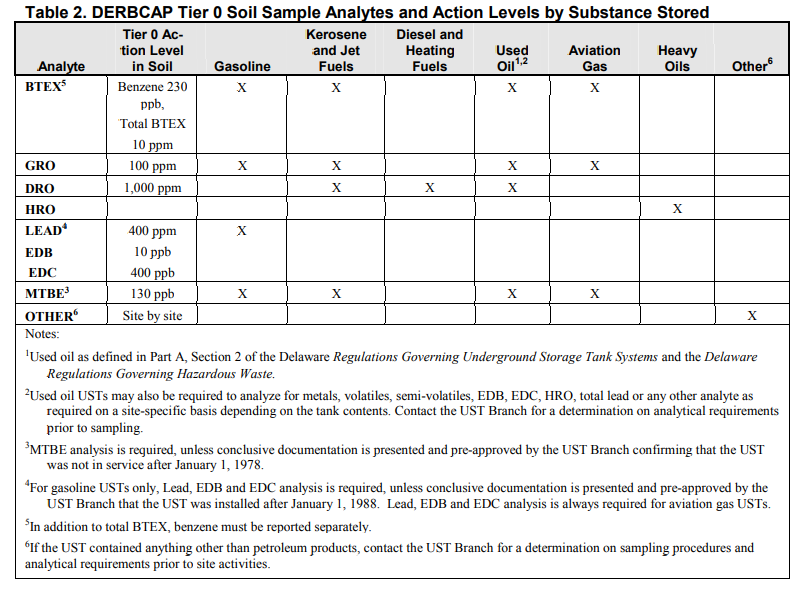Delaware Heating Oil Soil Standards
When removing an oil tank in Delaware you should be concerned regarding obtaining soil samples so evidence can be provided that the tank does not require remediation due to any leaks from the tank system.

When you remove a tank you need a minimum of two soil samples to be obtained for DRO, which is diesel range organics and DNREC's initial screening test for number two heating oil in soil.
If you are buying a property in Delaware where a tank was removed you want to review the tank closure report and ensure that soil sampling was performed and that DRO levels are below regulatory limits.
The big concern with oil tanks is that they leak and if the leak is significant, you need remediation. Remediation on the small end of the scale averages $8,000.00 to $15,0000.00

Delaware Soil standards for heating oil in soil are:
DNREC Soil Standards Relative to # 2 Heating Oil in Soil.
1000 ppm is the action level for DRO in soils.
Levels below 1000 ppm DRO are acceptable.
Levels above 1000 ppm require remediation.
ND means non detect, zero DRO readings.
*Any detection of DRO in soils is a clean sign that some discharge has occurred either from the tank system or possible from a spill or overfill of the tank. Hey if you see milk on a refrigerator shelf, you have a leak from the milk container.
Pro Tip
Always look for the soil testing data and environmental consultants written explanation of results. DNREC will supply a No Further Acton letter for removed oil tanks as long as soil testing was performed and DRO levels are below 1000 ppm.
Many people remove oil tanks or abandon the tank in place without doing any testing in Delaware because they don't want to find a problem.
Rust doesn't sleep and it is Buyer Beware when buying a property that had oil heat.

Delaware specific soil testing for different petroleum substances are listed below

Lets say you want to buy a property with an oil tank that is being used as the primary heat source, not uncommon. Our advice would be to remove and replace the tank if it has no warranty as most buried heating oil tanks have surpassed their designed useful life and are at risk of leaking. Unfortunately residential oil tanks do not have high tech leak detection systems like gas stations do. So when a metal tank starts to leak, you have no idea.
The tank below was an in-use oil tank, for a property listed for sale. Buyers were planning to convert the heat source to natural gas or even electric. Removal was not possible before the sale so Curren was contracted to test the tank by testing soil around the tank. This is kind of a pregnant not pregnant test, if you find oil in he ground next to the tank something happened.

In the photo below a GeoProbe drilling unit hammers hollow pipe in the ground around the buried tank. You try and surround the tank with borings to look for the presence of oil in the soil. It is a common approach on commercial sites and followed on residential sites as well.

On the right side of the photo you can see the clear tubes that contain soil that is extracted from the borings.

The photo below, although a different site shows the soil cores in greater detail. The real advantage of this tank investigative boring test is you can visually log the soil geology. Its also very informative, say only one sample location has oil? Well that can point towards a minor localized leak. Oil in all borings? Well that is pointing to a tank system failure and a much larger problem.

You don't have to be a tank expert, we are licensed in Delaware, New Jersey & Pennsylvania.
888-301-1050

